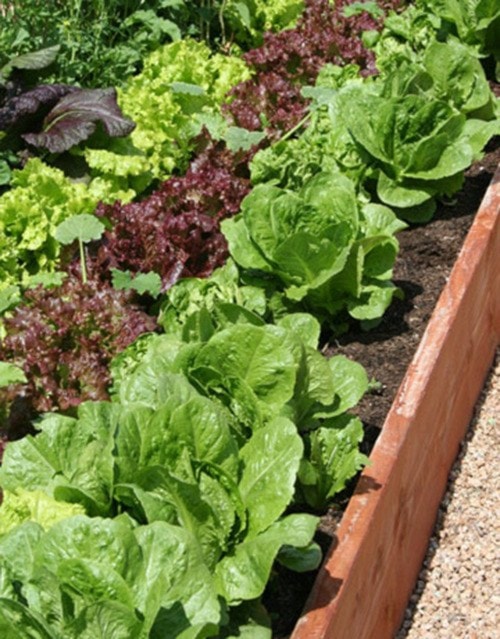I know it’s hot out there, but let’s keep our food gardens growing seamlessly through the summer and into fall and winter.
A number of things have changed the way we grow our own food.
First, less is more. Vegetable gardens have become smaller but more productive. I think most of us have realized that we tend to grow too much of one type of vegetable, that it all matures at the same time, and that a lot of it ends up in the compost because we have busy lives and no time to process and preserve our food.
Zucchini anyone? Now we grow two to three clusters of lettuce and a few tomatoes, cucumbers and squash to keep us nicely supplied with fresh produce through the summer. The same is true of brassicas, like broccoli, cabbage, cauliflower and kale and of root crops like beets, carrots, parsnips and turnips. Greens, like swiss chard and spinach, are now planted in smaller quantities so we can use it up in two to three weeks with little or no waste. We are growing pole beans and peas on tripod frames to make better use of space and to enjoy a far greater production. Cucumbers are also being grown this way. Smaller spaces, fewer plants, more creativity make for a well used garden needing less effort.
Another trend is towards adopting a more continual and sequential planting scheme. Not everything needs or should be planted at once. Early, cold-hardy plants, like onions, early potatoes, brassicas and peas can be planted in late March or early April. While carrots and beets germinate better in warmer temperatures, and squash, cucumbers, tomatoes, beans and basil love the heat.
To save time and to make food gardening more efficient, many folks are using transplants and even larger plants grown in four-inch pots for a quick turnaround. This can save weeks of time and keep a nice supply of fresh food flowing to your table. As one crop finishes, another one is popped in throughout the summer and on through fall until winter vegetables take over.
I have to give the breeders in our industry a great deal of credit for their creativity in developing, through traditional breeding, a whole array of more compact vegetables that produce better, more disease-resistant crops that have higher levels of nutrition and antioxidant values. Bush cucumbers, tumbling tomatoes, ‘Simply Salad’ lettuce blends, bush summer and winter squash are all examples of new varieties that produce quality food in much less space. We now have smaller cabbage heads, more productive peppers and better, longer lasting broccoli.
The variety of food has also expanded, like multi-coloured carrots, green, cheddar and purple cauliflower, gold and green beets, sweeter yellow tomatoes and crossover hot peppers, like ‘Chenzo’ and ‘Loco’, which are both edible and ornamental.
Food gardening is easy and fun, so keep that little garden space going. We’re only half way through the growing season. Enjoy!
